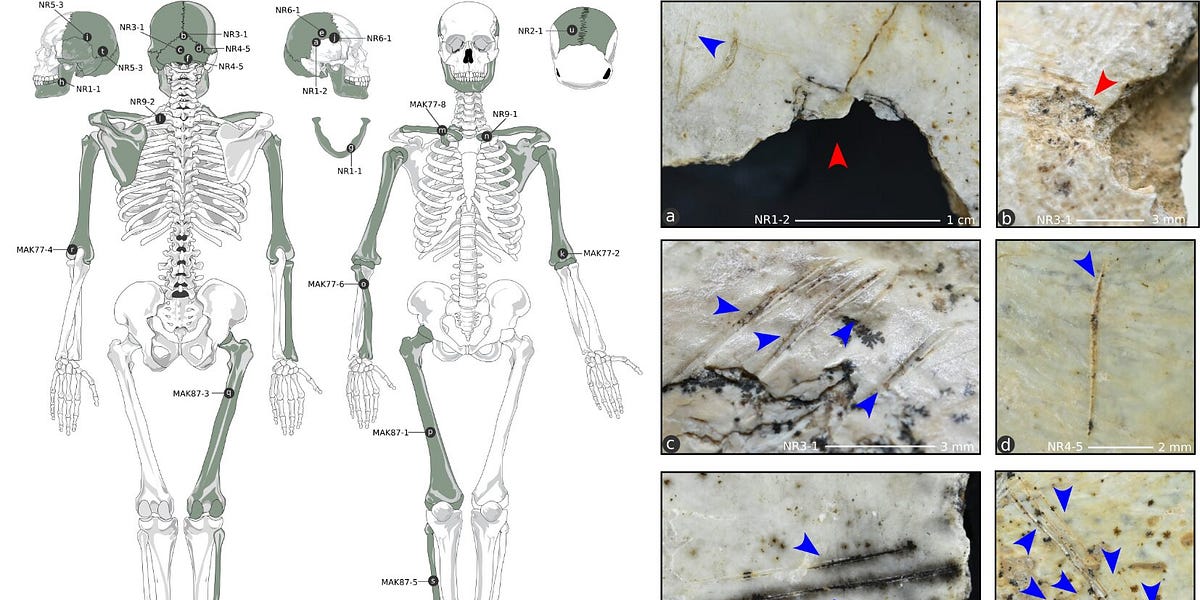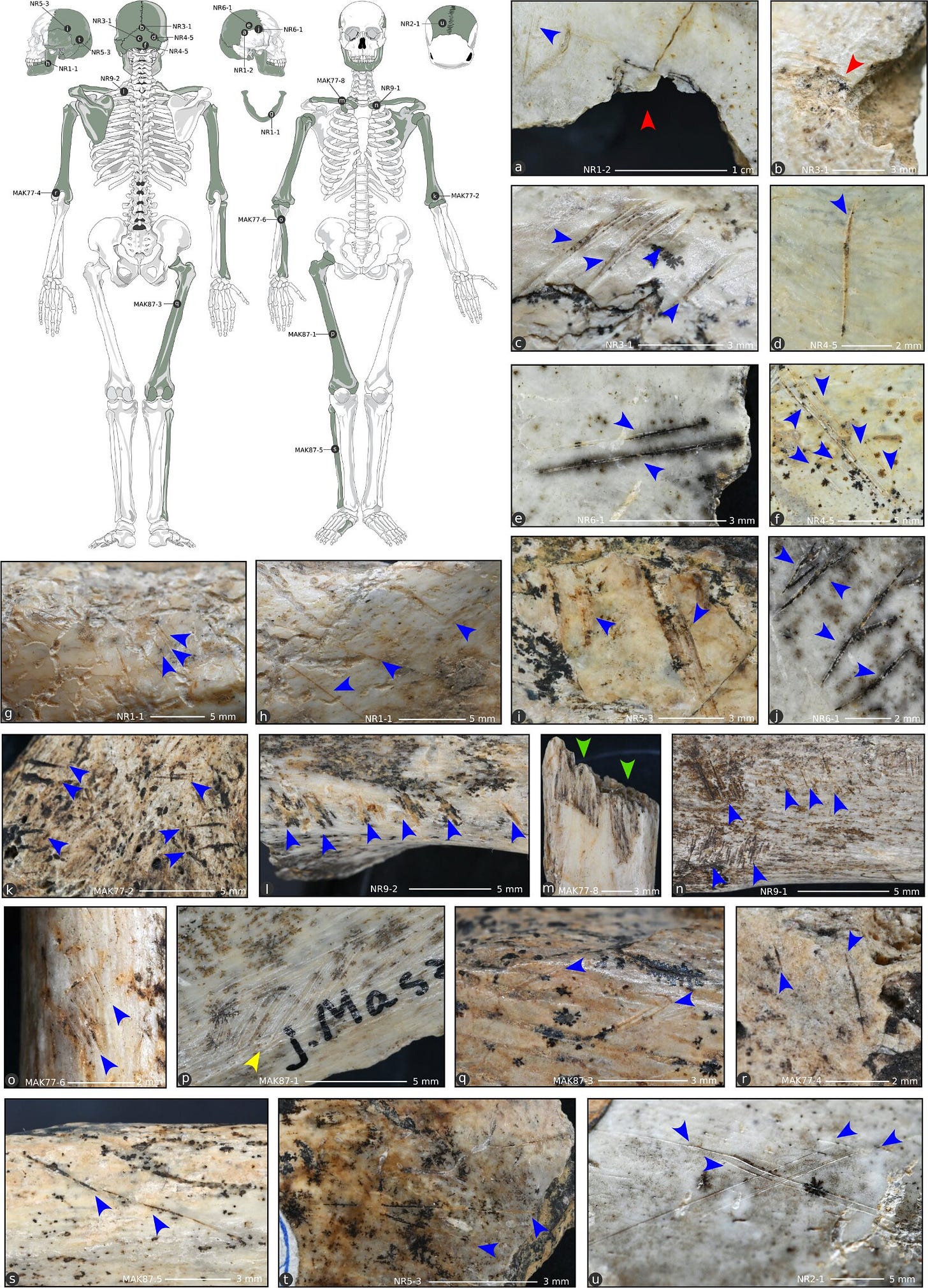
It is a haunting image: a group of Magdalenian hunter-gatherers gathered around a fire, consuming the flesh of their own kind. The idea of prehistoric cannibalism has long been a controversial topic, with scholars divided between those who see it as a survival necessity and those who argue for its role in ritual or warfare. A new study published in Scientific Reports takes another look at human remains from Maszycka Cave in Poland, and the findings reignite a long-standing debate.

The study, led by Francesc Marginedas and a team of international researchers, builds on previous investigations of the site. Earlier interpretations suggested the selective processing of skulls, hinting at mortuary rituals rather than cannibalism. But Marginedas and his colleagues present a different conclusion. Their analysis of cut marks, breakage patterns, and taphonomic data points to something much more unsettling: systematic butchery, marrow extraction, and possibly consumption.
“Cannibalism was an integral practice within the cultural systems of these Magdalenian groups,” the authors write.
But was it driven by ritual, survival, or violence? And what does this tell us about the social structure of Upper Paleolithic hunter-gatherers?
Maszycka Cave is not new to the anthropological world. Excavations have taken place since the 19th century, with researchers uncovering a mix of human and animal remains. The problem was that, until recently, no definitive conclusion could be drawn about the purpose behind the human bone modifications.
This new study, however, brings a fresh perspective. By applying quantitative taphonomic analysis—including a detailed assessment of surface modifications—the researchers identified clear patterns of cut marks, percussion pits, and notches. Many of these marks are consistent with defleshing, disarticulation, and marrow extraction, which are hallmarks of systematic butchery.
“The presence of cultural modifications may be related in more cases than expected to the consumption of the bodies, in other words, to human cannibalism.”
Most strikingly, these modifications are similar to those found at other Magdalenian sites in Europe, including Gough’s Cave in Britain and Brillenhöhle in Germany—both of which are widely accepted as sites of prehistoric cannibalism.
This raises an important question: Was cannibalism a regular practice among Magdalenian groups, or was it a response to specific environmental or social pressures?
The idea of survival cannibalism is often evoked in prehistoric cases, particularly during periods of extreme climatic stress. However, the timeline of the Maszycka remains suggests a different context. Dating to approximately 18,000 years ago, these individuals lived after the Last Glacial Maximum, a time of improving environmental conditions and expanding human populations. This weakens the argument that they were eating each other out of sheer necessity.
Instead, the study points toward two other possible explanations: warfare and ritual cannibalism.
One possibility is that the remains at Maszycka represent the aftermath of intergroup violence. The Magdalenian period saw increased territorial competition as hunter-gatherer populations expanded across Europe. The study suggests that the human remains may have been the victims of conflict, with cannibalism serving as a means of asserting dominance over defeated enemies.
“The treatment of the bodies and the indifference with which the remains were disposed of may be associated with the eaters’ lack of respect and empathy for those that were eaten.”
Alternatively, the butchery of human remains could have been embedded within a complex mortuary tradition. Other Magdalenian sites have yielded evidence of skull modification, including the manufacture of skull cups and personal ornaments made from human bone. This suggests that, far from being an act of desperation, the processing of human remains may have had deep cultural or symbolic significance.
The implications of this study extend beyond the question of cannibalism itself. The evidence from Maszycka Cave challenges our understanding of Magdalenian mortuary practices, suggesting that they were far more diverse and complex than previously thought.
Rather than seeing Upper Paleolithic hunter-gatherers as a monolithic group, we must acknowledge regional and cultural variations in how they dealt with the dead. The Magdalenian was a period of remarkable artistic and technological achievement—yet it was also a time of potential violence and ritualized death.
So, were the Magdalenian people of Maszycka Cave cannibals? The evidence strongly suggests they were—but why they engaged in this practice remains an open question.
What this study ultimately reveals is that the treatment of the dead in prehistoric Europe was neither uniform nor simplistic. The line between mortuary ritual and consumption is not always clear, and in the case of Maszycka Cave, it appears that the two were deeply intertwined.
“Cannibalism cannot be understood as a common or homogeneous occurrence during the Magdalenian period, at least not yet.”
What is clear is that these findings add a new layer of complexity to our understanding of early human societies. And as new methods of analysis continue to emerge, the bones of the past will keep speaking—offering tantalizing glimpses into the lives (and deaths) of our ancient ancestors.
For those interested in the broader context of prehistoric cannibalism and Magdalenian mortuary practices, here are some key studies:
-
Bello, S. M., et al. (2015). Upper Paleolithic ritualistic cannibalism at Gough’s Cave (Journal of Human Evolution). DOI: 10.1016/j.jhevol.2015.06.003
-
Saladié, P., & Rodríguez-Hidalgo, A. (2017). Archaeological evidence for cannibalism in prehistoric Western Europe (Journal of Archaeological Method and Theory). DOI: 10.1007/s10816-016-9287-6
-
Orschiedt, J. (2013). Bodies, bits, and pieces: Burials from the Magdalenian and the Late Paleolithic (Festschrift in Honour of Gerd-Christian Weniger). Link: https://www.neanderthal.de
-
Marginedas, F., et al. (2025). New insights of cultural cannibalism amongst Magdalenian groups at Maszycka Cave (Scientific Reports). DOI: 10.1038/s41598-025-86093-w







